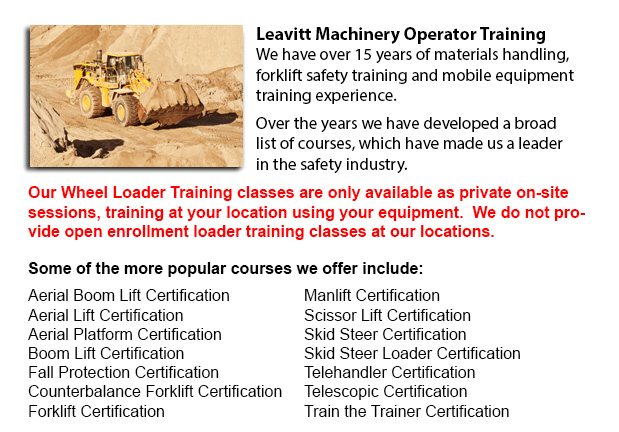
Lift trucks are obtainable in several different models that have different load capacities. The majority of average forklifts used in warehouse environment have load capacities of 1-5 tons. Bigger scale units are utilized for heavier loads, like for example loading shipping containers, can have up to fifty tons lift capacity.
The operator could use a control in order to lower and raise the blades, that could likewise be referred to as "blades or tines". The operator of the forklift could tilt the mast to be able to compensate for a heavy loads tendency to tilt the forks downward. Tilt provides an ability to function on rough surface too. There are yearly competitions intended for skilled lift truck operators to contend in timed challenges as well as obstacle courses at local forklift rodeo events.
General use
Forklifts are safety rated for loads at a specific limit weight and a specified forward center of gravity. This very important info is provided by the manufacturer and located on a nameplate. It is essential cargo do not exceed these specifications. It is unlawful in a lot of jurisdictions to tamper with or take out the nameplate without obtaining consent from the forklift manufacturer.
The majority of forklifts have rear-wheel steering so as to increase maneuverability. This is particularly effective within confined areas and tight cornering areas. This particular type of steering differs fairly a bit from a driver's first experience along with different vehicles. In view of the fact that there is no caster action while steering, it is no essential to use steering force so as to maintain a constant rate of turn.
One more unique characteristic common with forklift utilization is unsteadiness. A continuous change in center of gravity takes place between the load and the forklift and they must be considered a unit during use. A lift truck with a raised load has gravitational and centrifugal forces which can converge to result in a disastrous tipping mishap. So as to prevent this from happening, a forklift must never negotiate a turn at speed with its load elevated.
Lift trucks are carefully built with a particular load limit utilized for the tines with the limit decreasing with undercutting of the load. This means that the load does not butt against the fork "L" and will lessen with the elevation of the blade. Usually, a loading plate to consult for loading reference is located on the lift truck. It is unsafe to utilize a forklift as a worker lift without first fitting it with specific safety equipment like for instance a "cage" or "cherry picker."
Lift truck utilize in warehouse and distribution centers
Essential for every warehouse or distribution center, the forklift has to have a safe environment in which to accommodate their efficient and safe movement. With Drive-In/Drive-Thru Racking, a lift truck needs to travel within a storage bay that is many pallet positions deep to put down or take a pallet. Operators are often guided into the bay through rails on the floor and the pallet is located on cantilevered arms or rails. These tight manoeuvres need well-trained operators so as to complete the job safely and efficiently. As every pallet needs the truck to go in the storage structure, damage done here is more frequent than with other types of storage. When designing a drive-in system, considering the measurements of the tine truck, along with overall width and mast width, must be well thought out so as to make certain all aspects of a safe and effective storage facility.
-
Sudbury Aerial Lift Certification
Sudbury Aerial Lift Certification - Aerial Lift Certification is for individuals who requires an in-depth understanding of aerial lift safety. Inspectors and operators, supervisors, maintenance workers and construction craftsmen must perform a traini... More -
Sudbury Forklift Certification Schools
Sudbury Forklift Certification Schools - Within North America, forklift certification is mandatory, making forklift training programs necessary for both the company and their employees working as forklift operators. Forklift training focuses on healt... More -
Sudbury Boom Lift Operator Training
Sudbury Boom Lift Operator Training - A cherry picker refers to a type of aerial work platform. Cherry pickers include a platform or bucket at the end of a hydraulic lifting system. The device is likewise called a man lift, boom lift, basket crane or... More -
Sudbury Telehandler Certification
Sudbury Telehandler Certification - Telehandler certification programs are both for operators who have some experience driving a standard forklift and for those with no experience. The real-world training offered by these courses produces graduates w... More -
Operator Safety Training, Re-Qualification Training, In-House Instructor Training in Sudbury
Lift trucks are utilized in just about all industrial construction sites and in warehouse operations and in boat yards. The reach feature of a lift truck is a vital component used in several applications like for example when a shelving system is bei... More -
Crane / Overhead Crane / Self-Erect Crane / Truck Mounted Crane / Hydraulic Cranes Training in Sudbury
Bridge cranes or overhead cranes are a type of industrial material handling crane making use of a line and hook apparatus which runs on a horizontal beam running along two widely separated rails. Lots of overhead cranes could be seen in a long factor... More -
Sudbury Forklift Safety Training
Sudbury Forklift Safety Training - Anyone who wants to operate a lift truck should take a forklift safety training course in order to become a certified forklift truck operator. There are a variety of ways to obtain forklift training. Programs are pr... More -
Sudbury Forklift License
Sudbury Forklift License - Obtaining a forklift license or forklift certification in North America would require the one training to do classroom instruction in addition to hands-on training. The provincial, federal and state regulatory bodies are re... More

Forklift Certification Sudbury
TOLL FREE: 1-888-254-6157
Sudbury, Ontario
forkliftcertificationsudbury.com
Email Us
About Us


